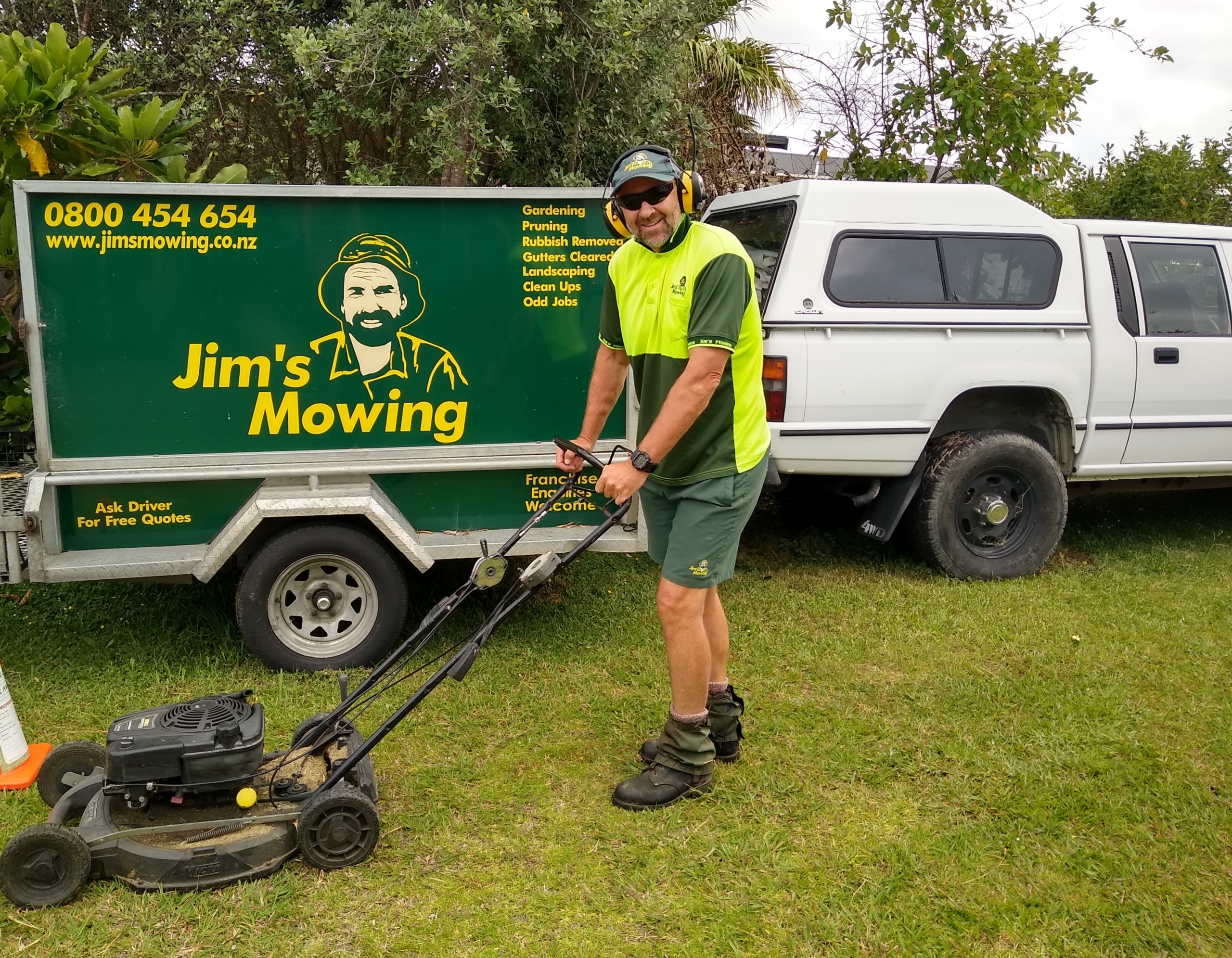Is It Bad to Mow a Wet Lawn?
Blog Overview:
Mowing a wet lawn can cause uneven cuts, spread disease, and damage both your grass and mower. It’s best to wait until your lawn is completely dry before mowing for a cleaner, healthier result.
Blog Discussion Points:
- Why mowing wet grass can damage your lawn
- How wet mowing affects mower performance and soil health
- Tips for safe mowing in damp conditions
- Ideal mowing times for New Zealand’s climate
- Professional help for year-round lawn maintenance
Is It Bad to Mow a Wet Lawn?
Many Kiwis wonder whether it’s okay to mow right after a rainy day or when the morning dew hasn’t dried. While it might seem harmless, mowing a wet lawn can cause more damage than you think.
Whether you’re trying to stay on top of your mowing schedule or just want your lawn looking tidy, it’s important to understand how moisture affects grass health and mower performance. Let’s take a closer look at why mowing wet grass can do more harm than good — and what you should do instead.

10 Reasons Not To Mow a Wet Lawn
1. Wet Grass Doesn’t Cut Cleanly
When you mow a wet lawn, the grass blades tend to bend under the mower rather than standing upright for a clean cut. This causes uneven mowing and leaves behind long, uncut patches.
Why it matters
Torn or shredded grass blades are more likely to turn brown and become vulnerable to disease. The uneven finish also ruins the neat, striped look you want after mowing. Waiting until the lawn dries ensures a smoother cut and a healthier appearance.
2. Wet Clippings Can Smother the Lawn
Moist grass clippings clump together easily, forming thick mats on the surface of your lawn. These clumps block sunlight and airflow, suffocating the healthy grass beneath.
What to do
If you must mow when the grass is slightly damp, rake or collect the clippings afterward. Avoid leaving them in piles — they can trap moisture and create an ideal environment for fungal growth.
3. Mowing Wet Grass Can Spread Disease

Wet conditions are a breeding ground for lawn diseases such as brown patch, dollar spot, and rust. When you mow a wet lawn, your mower blades can transfer fungal spores across the yard, turning a small problem into a widespread one.
Preventing disease spread
To minimise risk, only mow when the lawn is dry and avoid watering right before mowing. If you notice discoloured or patchy areas, let the grass dry completely before cutting again.
4. Your Mower Can Get Damaged
Wet grass can wreak havoc on your mower. Moist clippings stick to the underside of the deck, clog the discharge chute, and strain the engine.
Maintenance concerns
After mowing a wet lawn, you might notice your mower bogging down or even stalling. The wet clippings can also lead to rust, dull blades, and long-term mechanical issues. Cleaning the mower immediately after use is essential — but it’s much easier to just wait for dry conditions.
5. It’s Dangerous for You, Too
Safety is another big reason not to mow a wet lawn. Slippery surfaces increase the risk of losing your footing, especially on sloped or uneven terrain. Electric mower users face additional hazards from water and electricity.
Stay safe
If the grass is slippery, postpone mowing until conditions improve. Your safety and equipment are worth far more than an afternoon of mowing.
6. It Can Compact the Soil
When soil is soaked with water, it becomes soft and easily compressed. Mowing or walking on it in this state can compact the soil, squeezing out air pockets and restricting root growth.
The result
Compacted soil makes it harder for water, air, and nutrients to reach the grass roots — leading to weak, patchy growth. Over time, this creates drainage problems and uneven lawn surfaces.
Tip: Wait at least a day or two after heavy rain before mowing to give the soil time to firm up.
7. Clumps of Grass Can Cause Uneven Growth
A freshly mown wet lawn often ends up with visible clumps of wet grass sitting on top. These clumps decompose slowly and can create “burn” spots due to trapped moisture and heat, resulting in discoloured patches.
How to fix it
If you accidentally mow when it’s damp, lightly rake the grass afterward to break up the clumps. You can also go over the area again with a bagging mower once the lawn dries out.
8. Mowing Wet Grass Makes Ruts and Tracks
If your mower leaves muddy tracks or dents in the ground, it’s a clear sign that the soil is too wet. These ruts not only ruin the appearance of your lawn but also make future mowing uneven and difficult.
The solution
Avoid mowing until your shoes stay mostly clean after walking across the lawn — that’s a good indicator the ground is dry enough for mowing. If you already have ruts, fill them with a light topsoil mix and reseed the area.
9. Timing Your Mowing in New Zealand’s Climate
New Zealand’s weather can be unpredictable — especially in spring and autumn when rain is frequent. To keep your lawn in top shape, it’s all about timing.
Best practice for Kiwi lawns
- Mow in late morning or early afternoon once dew has evaporated.
- During rainy weeks, wait for at least half a day of sunshine or wind before mowing.
- If you use a mulching mower, be extra cautious — wet grass tends to clog and clump more.
By aligning your mowing routine with the local weather, you’ll save time and avoid unnecessary stress on your lawn.
10. When You Can Safely Mow Slightly Damp Grass
There are rare occasions when mowing slightly damp grass is acceptable — for instance, when light dew is present and the soil underneath is firm.
To do it safely:
- Raise the mower height to reduce strain.
- Use sharp blades for a clean cut.
- Walk slowly to avoid slipping.
- Clean your mower deck immediately after use.
These precautions can help if you’re short on time and can’t wait for perfect conditions — though dry mowing is still the best option.

Frequently Asked Questions
1. Can mowing a wet lawn damage the grass permanently?
Usually, no — but repeated mowing in wet conditions can cause long-term problems like soil compaction, disease, and root damage. Occasional accidents are fine, but try to avoid it as a habit.
2. How long should I wait after rain before mowing?
Wait at least 24 to 48 hours after heavy rain. The soil should feel firm underfoot, not soft or muddy.
3. What should I do if I accidentally mowed my lawn while it was wet?
Rake up any clumps of grass, clean your mower, and avoid watering for a day or two. Allow the lawn to recover naturally before your next mow.
4. Why does wet grass clog the mower?
Moisture makes grass clippings sticky, causing them to cling to the mower deck and block airflow. This reduces cutting efficiency and can overheat the motor.
5. Is it okay to mow dew-covered grass in the morning?
Light morning dew is generally safe if the soil is dry and your mower has sharp blades. However, avoid mowing if the grass feels slick or heavy with moisture.
Final Thoughts
While it might be tempting to mow a wet lawn to stay on schedule, the risks far outweigh the benefits. Wet conditions make it harder to get a clean cut, can spread disease, damage your mower, and even put your safety at risk. Waiting for the lawn to dry not only keeps your grass healthier but also ensures a more professional finish.
If unpredictable weather or a busy schedule makes lawn care difficult, let the professionals handle it. Jim’s Mowing NZ offers expert mowing and lawn maintenance services across the country — rain or shine, we’ll make sure your lawn looks its best.
Call Jim’s Mowing NZ at 0800 454 654 to book your lawn care service today.



